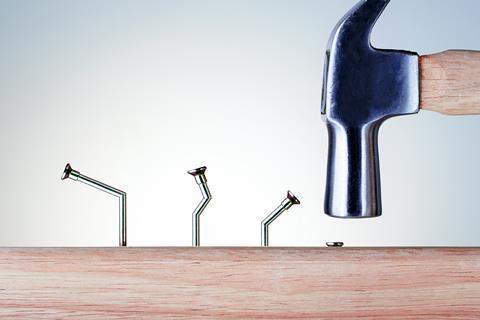How correcting your own mistakes helps students learn

Have you ever made a mistake on the whiteboard and had it pointed out to you by one of your students? Perhaps you spelled a keyword incorrectly, drew the wrong number of carbon atoms for an organic molecule or incorrectly balanced an equation? I certainly have. Students are always keen to point out where you got something wrong, but perhaps teacher mistakes, or apparent mistakes, could have educational value in the classroom.
Self-correction is a skill we would all like to see in our students. How often do we remind them to check their work? And yet they rarely do it or, if they do, it’s ineffectively. However, this lack of effective checking and correcting may not be their fault. They simply might not know how to self-correct, or know what questions to ask of themselves. This is where your planned or unplanned errors in classroom instruction can provide useful modelling of self-correction.
Teachers are fallible
We all make mistakes and, ideally, we would like our classrooms to be safe places for our students to make mistakes and learn from them. Modelling self-correction in our own instruction shows that teachers are not infallible. It can also be engaging.
Students pay closer attention if they think I might make a mistake. This also fosters an environment where they know it is OK to try something outside their comfort zone. Seeing me making mistakes and not panicking or having a meltdown (or, if I do, in a totally comedic way) creates a safer environment for their own mistakes and shows them what they could do in the same situation.
When I’m in direct instruction mode, presenting some chemistry or modelling how to approach a question, I typically write on the whiteboard or project my live handwritten notes onto the whiteboard from my iPad. Powerpoints can be useful too, but lack the spontaneity that comes from really good instruction given on the board.
I make a mistake, step back, look at it, say ‘no, that’s not quite right’ and then correct it. The students can see my non-verbal cues, like the way I tap the species in an equation with my pencil as I check the balancing of an equation. They can also see if I have to use something for reference, like the periodic table or a data book to find a piece of information to help me self-correct.
Pre-plan your mistakes
Oh I have lost the ability to spell this morning, how do we spell indicator?
The best modelling of self-correction is planned to the point of it appearing to be completely spontaneous. Of course, some mistakes will just happen, but the best modelling of self-correction is planned. For example, pretend you can’t remember how to spell and ask your students for help spelling tricky keywords as you write on the board. Choose which topics and activity types you are most confident to do this in and plan an opportunity into a lesson sequence.
Narrate your thoughts
NaSO4 … is that the right formula for sodium sulfate? How do we know? Go back to the common ions; sodium is in group 1 so it is a +1 ion, sulfate, I remember that through the acid H2SO4, there are 2 H+ ions, 2+ so sulfate must be 2-. As experts, we tend to internalise this dialogue, but our students need to hear this so they can begin to develop their own set of prompts.
Is that the right formula for sodium sulfate?
Narrate your thoughts. As experts we tend to internalise this questioning dialogue: NaSO4 … is that the right formula for sodium sulfate? How do we know? Go back to the common ions; sodium is in group 1 so it is a +1 ion, sulfate, I remember that through the acid H2SO4, there are 2 H+ ions, 2+ so sulfate must be 2-.’ But students need to hear this so they can begin to develop their own set of prompts.
Exam technique
It is good practice for learners not to rub out or obliterate answers they may want to correct. Ideally, they should cross out what they think is incorrect with a single line so that an examiner can still read their work. We should model this in our instruction. I make a point of crossing through my errors rather than erasing them. This has the additional benefit of placing value on the process rather than just the final result. Mistakes don’t need to be erased, they need to be learned from.
Proceed with caution
This isn’t a technique for every lesson. Students need to have confidence their teachers know what they’re teaching and too many mistakes, even if they’re faked, could undermine this. A mixture of planned mistakes and modelling internal dialogues creates a good balance.
Kristy Turner











No comments yet